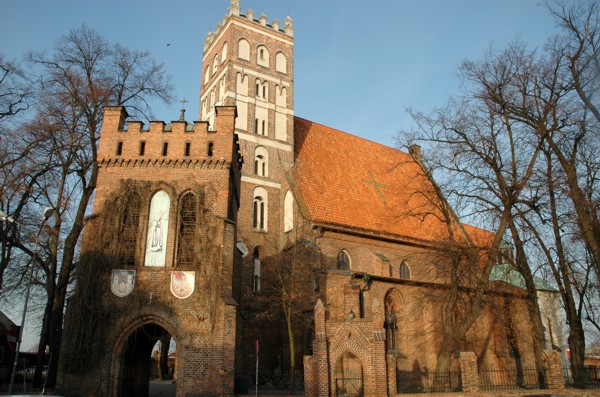
A county town located 35 km south-east of Poznań, by the road to Kalisz.
A mononave temple was originally erected in 1423 to 1428, to the credit of local rector Bartłomiej, a Canon of Poznań. In the late years of 15th or early years of 16th, side naves were built and the tower heightened (its crowning attic getting reconstructed in 1926). The temple was made a collegiate church in 1423.
This basilica-type edifice has a pentagonally enclosed presbytery being narrower than the central nave. A sacristry is adjacent to it at the north; on the southern side is a late-renaissance octagonal grave chapel of the Gostomskis, built 1598–1602. The outfit is mostly baroque-styled, dating to 17th/18th century. Of the earlier historic monuments, there are: renaissance canon stalls from ca. 1520 at the presbytery; a renaissance stone gravestone of Ambroży Pampowski (d. 1510), a Środa starost and illustrious politician in the Jagiellon court’s service – the gravestone features a standing figure of armoured knight; and, late-gothic sculptures on the rood beam. In the Gostomskis’ chapel, there is a late-renaissance altar from ca. 1600 and two early-baroque tombstones. The chapel entrance leads through a portal with a magnificent late-renaissance grate of 1598.
The Collegiate Church of Środa has made a record in the history of Polish democracy. In 1496, the general sejm assembly at Piotrków-Trybunalski established Środa as the site for deliberations of the Poznań and Kalisz Voivodeship noblemen. At sejmik – regional council – assemblies, senators debated inside the temple and envoys, on tribunes placed in front of the church, with the secretary residing at the chapel, separated from the disputers – too impetuous, as they might sometimes have been – with a metal grate.
Address:
pl. Kościelny 1
Środa Wielkopolska






